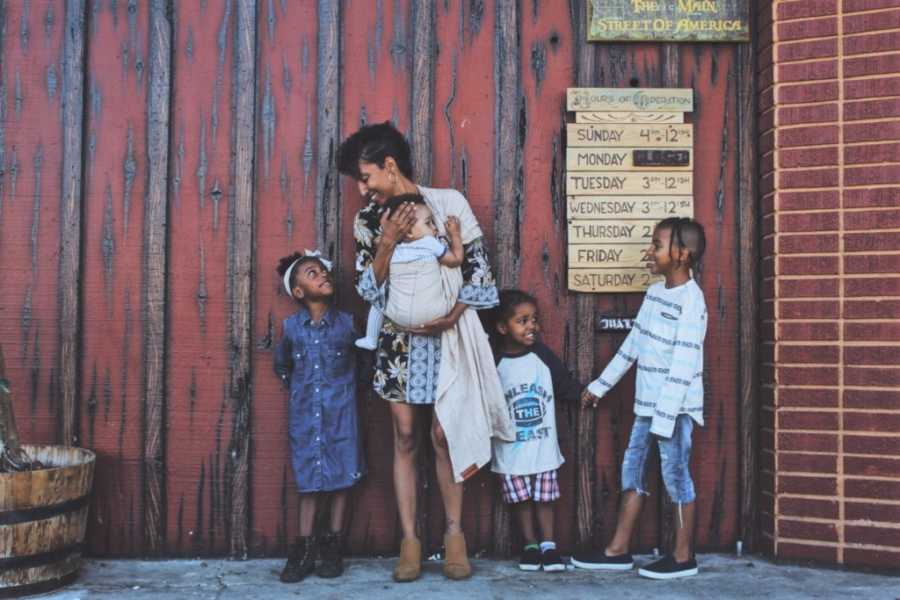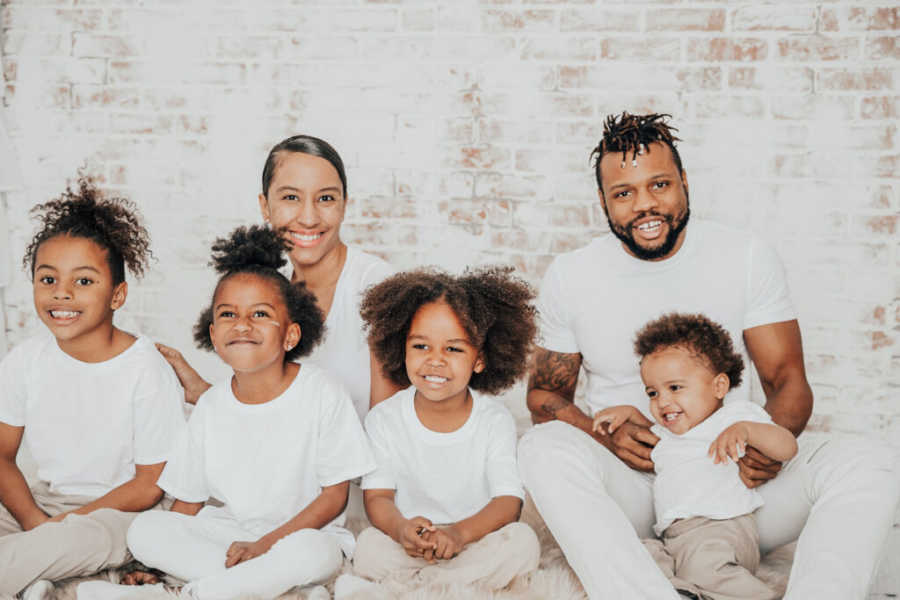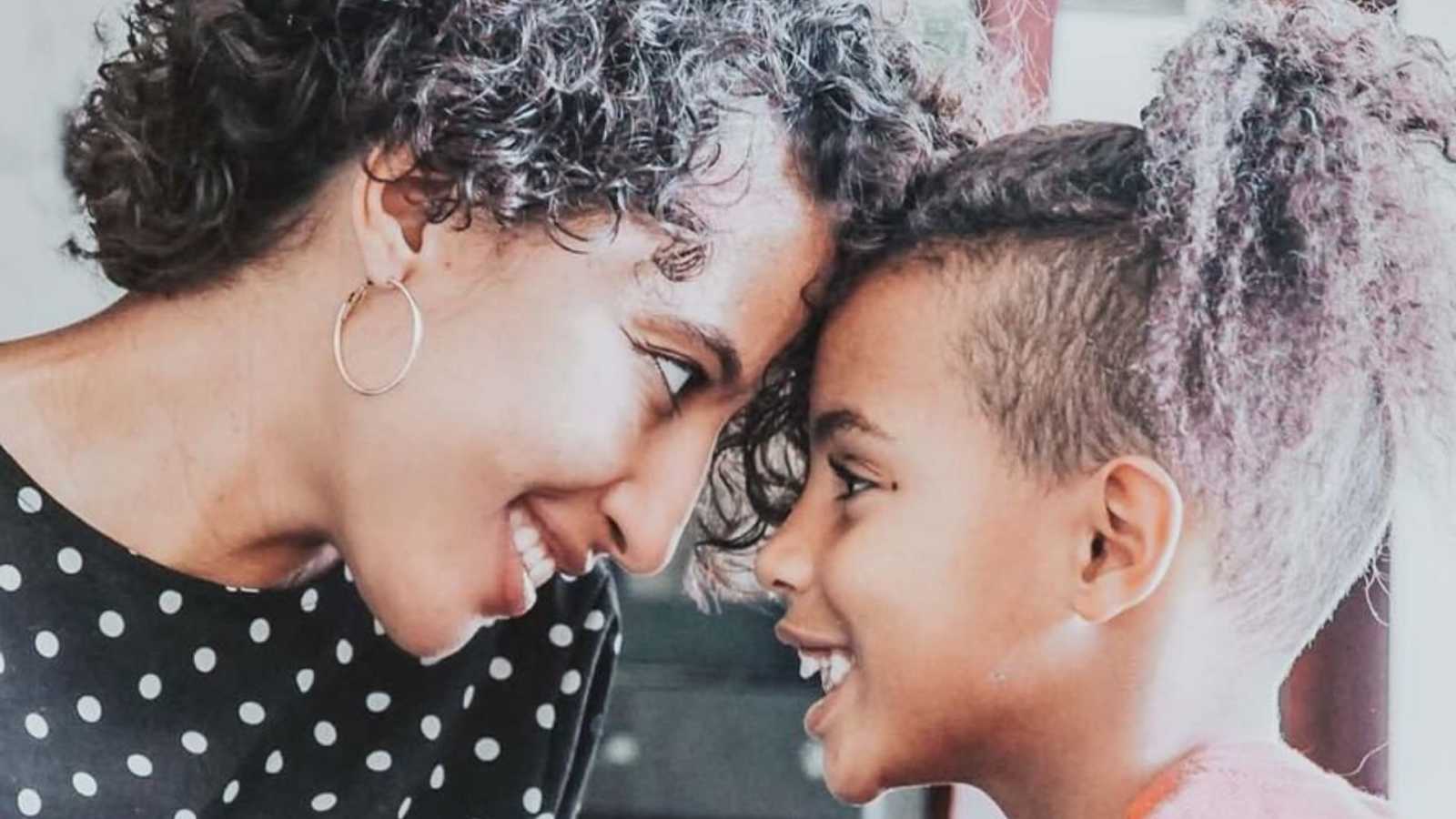Talking to children about racism and social injustice issues
This is a subject that’s hard for most adults to speak about, so as a mother to have to talk with your children about racism and social injustice issues may seem like a battle you can’t win. If you’re like me then on one hand you feel it’s stripping them of their innocence, taking away from their childhood and the notion all people are good. Within that same breath, the fear if this conversation isn’t had, the thought that it may very well be the reason they don’t make it home one day immediately comes to mind. Because for them, even though you and I may see their loving nature – how they’d never disrespect an adult, let alone try to hurt one – others may not. And the idea they may be too young to even be considering such things went out the window with Tamir Rice. So, the only question left, is where do you begin?

Preparing for the conversation
Before I have any conversation with my children, I always check myself. Evaluating my feelings, ideas, and overall mental state when it comes to the topic. For social injustices and racism, it is of the utmost importance to do the same. These kinds of topics can anger us, especially if we ourselves have suffered at the hands of such experiences. So, make sure you take a few moments and ask yourself, am I ready for this? Being truly open and honest with your response.
It’s also a good idea to get other perspectives on the issues. Especially if it isn’t one that directly affects you. As an example, growing up with a white mother whenever she would have these types of conversations with me, she mentioned she spoke to my siblings, read comments on Facebook, or even went as far as to research Black Lives Matter and their stance on it.
But even if you are more directly tied to the situation, do some research. Reading what other races have to say can be enlightening. There are plenty of allies out there and knowing people everywhere are just as affected by these senseless acts brings a feeling of unity and solidarity. This can help ease some of the pain and better prepare you to talk to your children.
In addition to researching other opinions, looking up statistics and case studies is also a good idea. Having factual data to present to your children during the conversation will be helpful. Believe me when I say your children are going to bombard you with questions, so the more you know the better off you will be. Keep in mind that a child’s understanding of a situation is often way beyond what we could have guessed. This means treading lightly when answering some questions, keeping in mind your comfort level with the subjects.
As I am sure you know, children often surprise us. At least mine do with their level of knowledge on a particular subject and I can guarantee you this conversation will be no different. Studies have shown children in preschool are keenly aware of racial injustices. What this means for us as parents is to have a stopping point for these types of conversations will be needed. Having an idea of how much information you are comfortable sharing with your children will help you better navigate the discussion. While I personally take a very upfront and pretty open approach, hitting any and all taboo topics, I understand this may not work for everyone. That’s perfectly okay if that is the case, just make sure you are aware of that fact and prepare in advance.
You can do this by having a mental idea of what you’d like to share and what you’d like to keep for another day or even when they are older. This type of preparation will give you a line mentally that you know not to cross and can help you keep control of the conversation, in case it does veer off in a direction you’re not too fond of. Also writing down what you’d like to discuss is key here too.
Writing down the key points prior to the actual conversation is a lifesaver. Seriously. Make an outline or a bubble map. Take it back to elementary school. Trust me. You’ll be glad you did. Because this gives you a chance to organize your thoughts, prioritizing what’s most important and key facts or ideas you want to mention. While still allowing you to maintain control of the conversation as needed.
How to start the conversation about racism and social injustice
Actually, starting will probably be the most difficult part of this entire thing. But once you do, it should flow pretty well. Of course, expect some ups and downs, with tons of moments where you are in disbelief by a question or response. But for the most part, once you’ve started, it gets easier. My number one suggestion is to keep your children’s ages in mind once you’ve begun.

For younger kids, you may want to word things in a way they would understand easier. I am by no means telling you to say things like ‘we don’t see color’ or ‘some people are just mean.’ No, it is important this discussion be productive, and it gets your child to think on their own. Offering up vague responses like the ones above will not facilitate that. As hard as it may seem to do, it’s necessary and honestly, worth it. So, don’t deflect or sugar coat, but do keep in mind your child’s understanding of the world around them.
Make it known it’s going to be a serious conversation. This doesn’t have to be harsh, or over the top. I normally like to start with, ‘Hey guys, mommy and daddy want to talk to you about some things that are going on right now. I know some of this is going to be confusing and even hard to hear, but it’s important you listen as well as ask any questions you may have.’ Something like this usually lets my children know it’s time for something important and now it is not the time to joke or be funny.
The very first time we ever had a conversation like this, my oldest was in kindergarten. News of the cop being fired who shot and killed 12-year-old Tamir Rice had just started to surface and it brought about some very tough feelings for Desmond and I. We knew it was something we wanted to discuss with our children, but we also knew bringing up this one incident out of nowhere may confuse them. So, we started at the beginning.
Going over slavery, Harriet Tubman, the Civil Rights Movement, Dr. Martin Luther King, the Alabama Church Bombing, the Tulsa Race Massacre, and anything else we thought would help them understand the current state of affairs. I would suggest the same for you. Start at the beginning. Go over in detail as much as you’re comfortable with and again, allow questions, allow comments, and most importantly allow them to see your emotions. Whether that be pain, sadness, or even anger, feel, and allow them to do the same.
What to say during the conversation
While this topic is titled what to say to your child, I think it’s just as important to discuss what you should do in front of your child during this conversation. I know I touched on this a little above but letting your children see your empathy for these situations can do so much. Children often gauge how to respond to things based on their parents’ reactions. So, imagine being a 6-year-old listening to your mother who has a straight face tell you about the historical and systemic oppression of an entire race. As a child, you may think, ‘Oh this isn’t something I should be concerned about. Just something I need to know.’ This is the exact opposite of what I hope you want to get out of this conversation.

As parents, we teach our children how to shape their values and morals. Showing them what’s considered good versus bad and vice versa. That should be the goal of this conversation. Whenever we have these types of conversations, which has become more frequent with the increased numbers of police-involved shootings, as well as regular citizens, we make it a point to give them action steps at the end. I think a lot of times, even as adults we feel so lost. Often wondering what can be done to make a difference. So as children, I am sure such feelings are only amplified.
Giving them ways to spot and stop bullying at school or notifying them of any peaceful protest that may be taking place is great. Allowing them to write their congressperson, speaking up for if they hear or see someone being mistreated, or even organizing their own rally, and stand against these social injustices are all ways to get them involved and taking action, which will inevitably get you involved too.
Taking steps like those will also help your child’s understanding and ability to cope with these types of big ideas. Children may feel guilt, shame, disgrace, or even anger after having this conversation and ways to counteract that include taking action.
Preparing for the psychological effects racism and social injustice can have
Outside of taking action, which may not always be doable, give your child allies. Letting them know there are plenty of people out there fighting on the front lines for theirs and others safety is vital. Having a glimmer of hope in what can seem like such a depressing situation will make all the difference. Show them facts, pictures, and real-life situations such as interviews, tweets, etc. from people who look like them, but also those who don’t. Explain to them not everyone feels this way and it is something we can all work together to change.
And finally, never stop the conversation. Please don’t let this be a one and done type of thing. Our children are presented with more information than I’d personally care to admit, so leave the door open. Make it known they can come to you anytime about anything, including things they may have heard or seen from someone else. There have been plenty of times where my child Karson has asked about a police shooting based solely on the ideas of his friends that I had to correct immediately. So, keep it going. This doesn’t mean it’s something you bring up daily, but also not so infrequently that your child has to be reminded about the same things each time.
Having children has gotten harder and harder with the topics that need to be addressed by parents morphing into something I am sure my grandparents wouldn’t have ever mentioned. But sadly, that’s the state our society is in. I believe as long as we have these hard conversations, allowing our children to ask questions, see facts, and learn from our past mistakes we are in for a much brighter future.

This story was submitted to Love What Matters by Jazmyne Futrell of Mixed Mom Brown Babies. You can follow her journey on Instagram. Submit your own story here, and be sure to subscribe to our free email newsletter for our best stories.
Read more from Jazmyne:
Do you know someone who could benefit from this story? SHARE this story on Facebook with family and friends.



